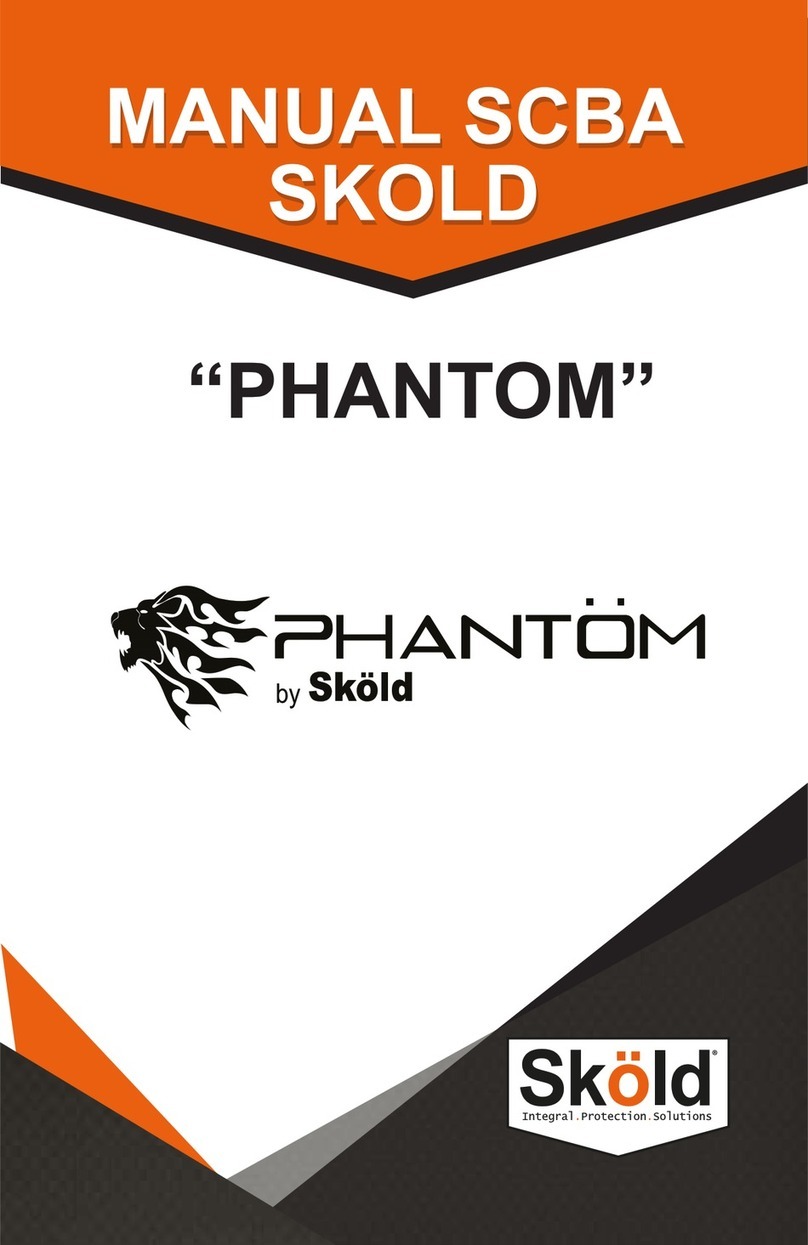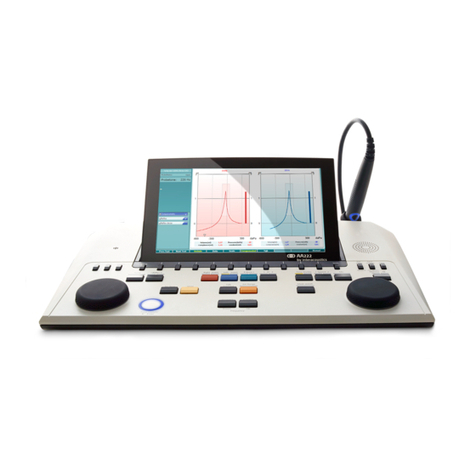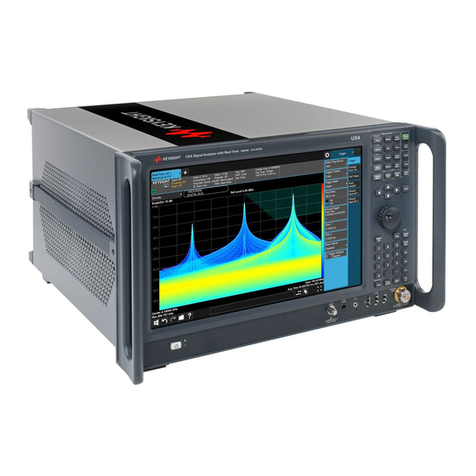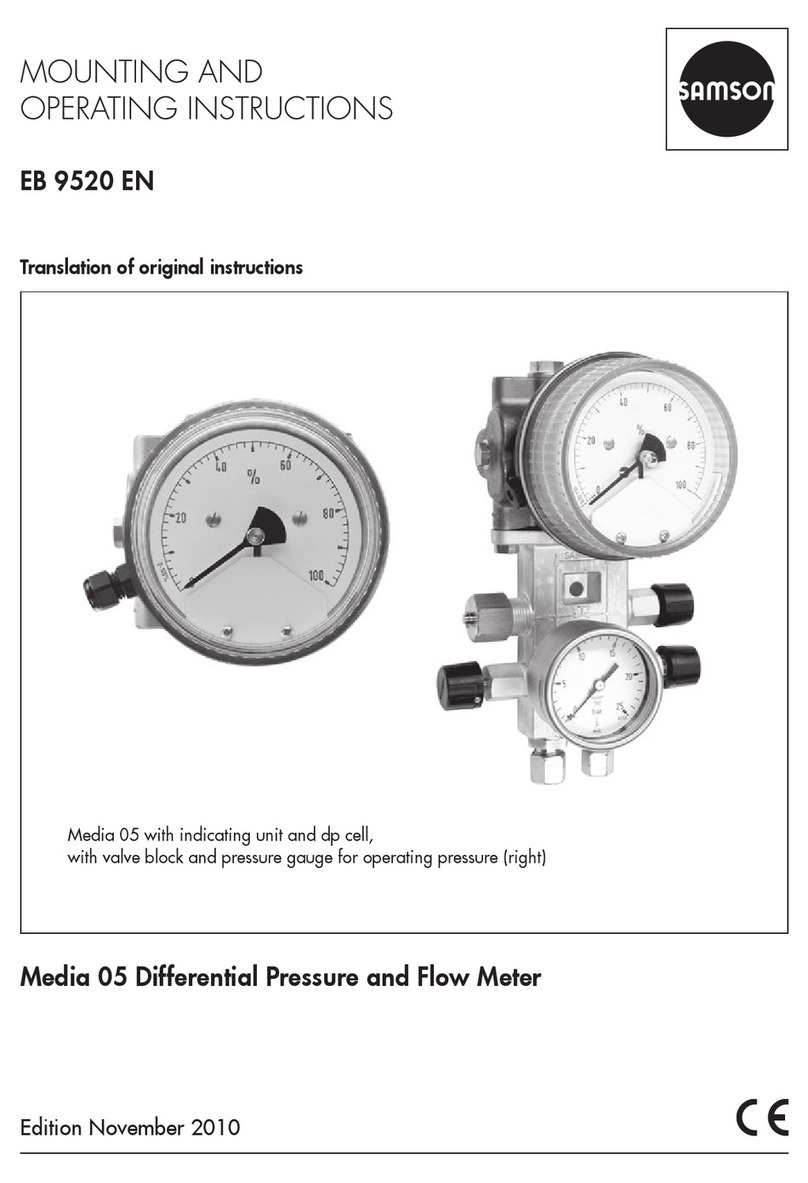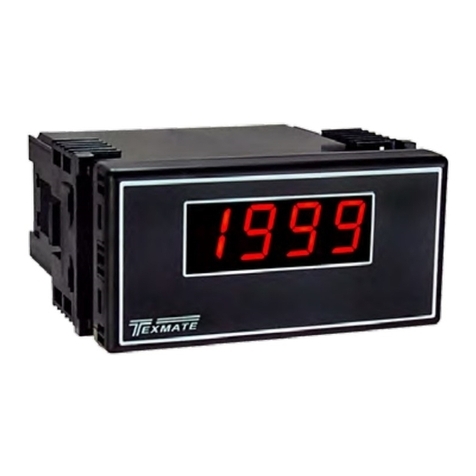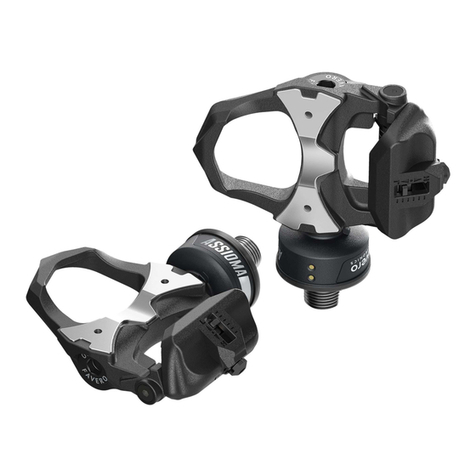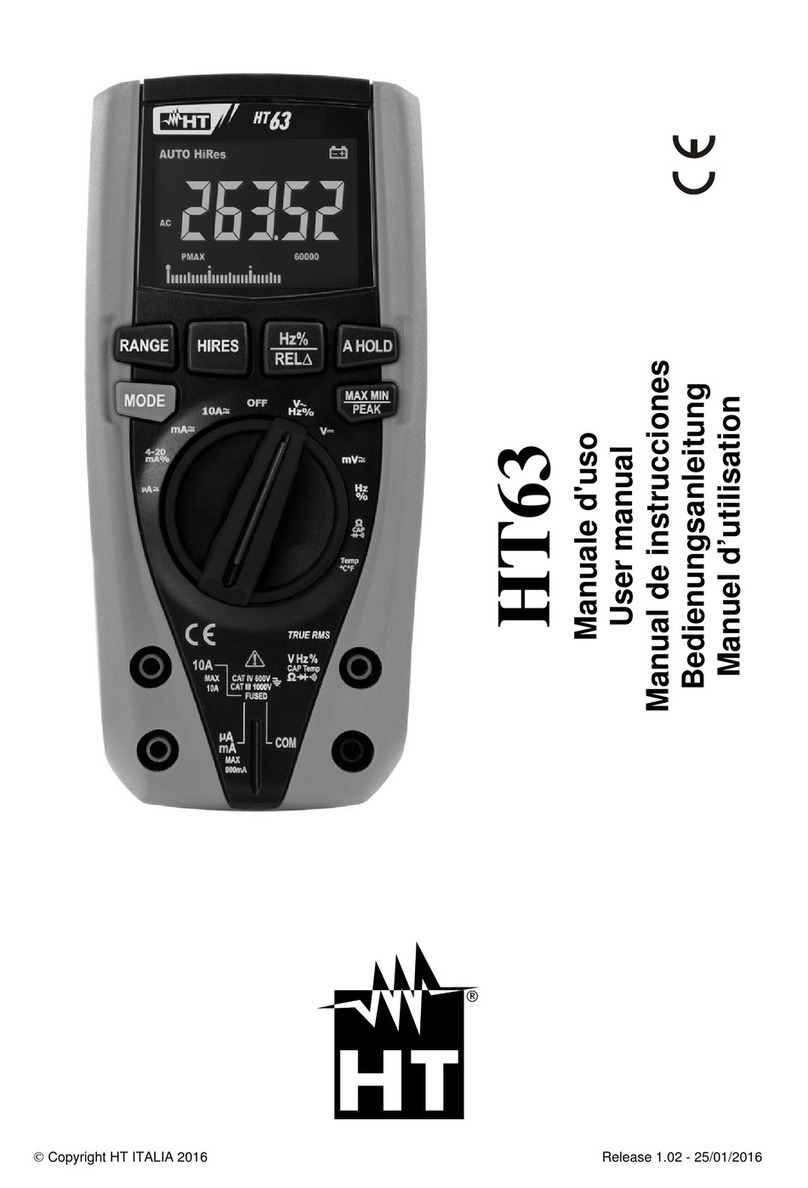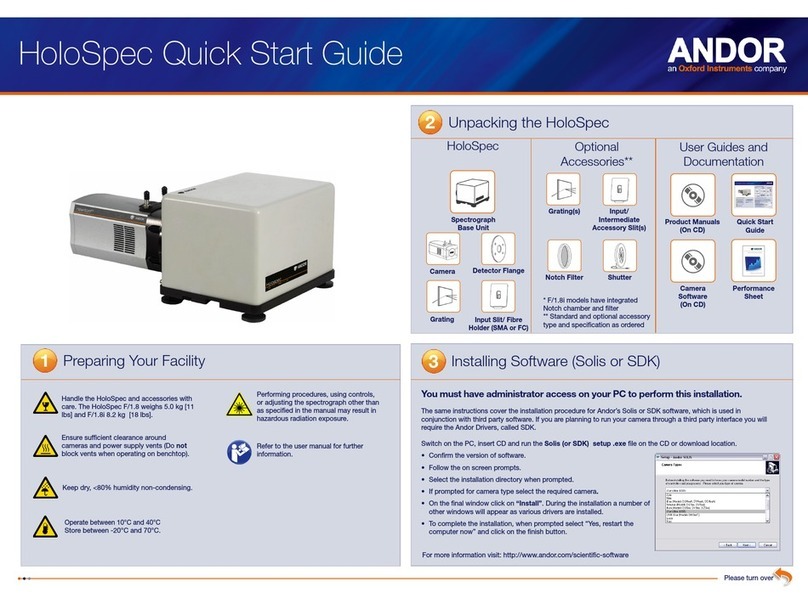Skold PHANTOM NFPA 1997 User manual

SCBA PHANTÖM MANUAL
NFPA 1997 - 2002 - 2007
SCBA PHANTÖM MANUAL
NFPA1997 - 2002 - 2007

Sköld SCBA Phantöm NFPA 1997
INSTRUCTION MANUAL
Quick and complete guide to Sköld Safety
self-contained breathing apparatus in its
Phantöm NFPA 1997, 2002 and 2007 version.

by Sköld
2
Sköld Safety
ENGLISH
IMPORTANT POINTS - PLEASE READ CAREFULLY IF NOT USED AND
KEPP APPROPRIATE THIS PRODUCT MAY RESULT IN INJURY OR DEATH
The Phantöm´s pneumatic system is designed to be simple to use and easy to maintain and
will operate for many years if given proper maintenance and cleaning. The care and use
instructions given in this manual should be read, understood and followed carefully before
using the appliance.
The procedures in this manual DO NOT make Sköld Safety responsible for any loss or injury
resulting from any actions arising out of the use of the same. Spare parts and accessories are
available from your Sköld Safety authorized dealer. Replacement parts from elsewhere will
void NIOSH approvals. No additional service not recommended in this manual is recommen-
ded. If a problem persists, you should remove the service device, label it for repair and send
it to an authorized Sköld Safety Dealer or factory for evaluation and /or repair.
TRAINING
Sköld Safety strongly recommends that the training program is in accordance with the
Occupational Safety and Health Programs. Training and service programs are available upon
request. Please contact Sköld Safety or your local distributor for further details.
NIOSH/OSHA WARNINGS
The following warnings have been given in accordance with accepted safety conventions
and /or NIOSH / OSHA cough requirements, and apply to the use of breathing apparatus in
general.
HEALTH LIMITATIONS: SCBA users must be medically certified prior to use. In addition, there
are physiological and psychological limitations that must be considered before using SCBA.
These include, but are not limited to:
* Emphysema
* Chronic obstructive pulmonary disease
* Bronchial asthma
* Evidence on pneumonia radiography
* Evidence of reduced lung function
* Coronary artery disease
* Severe or progressive hypertension
* Epilepsy
* Pernicious anemia
* Diabetes (insipid or mellitus)
* Respiratory distress when using SCBA
* Claustrophobia or anxiety when using SCBA
* Abnormal electrocardiogram (ECG) or
pressure test results
* Broken or perforated eardrum
PHANTÖM NFPA 1997
CERTIFICATION CE: EN 137:2006
Equivalent NFPA 1997
Models:
SCBA-P30FC (30 minutes carbon fiber cylinder)
SCBA-P60FC (60 minutes carbon fiber cylinder)
SCBA-P120FC (2 cylinders of 120 minutes carbon fiber cylinder)

Sköld SCBA Phantöm NFPA 1997
INSTRUCTION MANUAL
3
Sköld Safety
WORKING TEMPERATURES:
The Phantöm is approved for respiratory protection during entry or exit of oxygen deficient
atmospheres, gas atmospheres, and atmospheres of vapors at temperatures above -25°F.
When used below the freezing point, care must be taken to prevent moisture from entering
the demand and exhalation valves. This includes when the cylinders are being changed.
DURATION OF USE:
Although the Phantöm has been approved as a 30-minute, 45 minute or 60-minute respira-
tor, varying work pace, physical condition and other factors can substantially reduce the
actual use of the unit.
SCBA LIMITATIONS:
The SCBA can only protect the respiratory system of the user. Other protection may be
necessary to avoid contamination through skin absorption. If it is suspected that these types
of materials may be present, an effective full-body protector of impermeable material
should be used with the SCBA. Sköld Safety and HazMat suits manufacturers have available
a HazMat Class A universal suit for the Phantöm.
FACIAL HAIR:
Facial hair or any item that may interfere with the mask seal on the face or the operation of
the exhalation valve should not be allowed. This includes beards, sideburns, mustaches,
beads, head covers, or anything that may interfere with proper mask sealing to the face. We
also have a hood available for users who have facial hair.
EYES DEVICES:
Do not wear glasses when the temple bars interfere with the sealing.
PRECAUTIONS AND LIMITATIONS
* Airline respirators may only be used when supplied with breathable air that meets the
requirements of CGA G-71 Grade D or higher quality. Use only the pressure and hose length
scales specified in the User Instructions.
* Failure to properly maintain and use this product could result in injury or death.
* Approved respirators must be selected, adapted, used and maintained in accordance with
OSHA documents and other regulations that may apply.
* Never replace, modify, add or omit parts. You should only use the exact factory-specified
replacement parts. Do not mark the unit with inks or paints that may be flammable. A
vibrating artifact can be used to record on all parts except the viewfinder, or the cylinder
* Refer to User Instructions and/or maintenance manuals for information on use and mainte-
nance of these respirators.
* The User´s Critical or Special Instructions and /or specific limitations of use apply. See User
instructions before putting on the appliance.
CRITICAL INSTRUCTIONS SPECIAL FOR THE USER
*Approved for respiratory protection during entry to or exit from oxygen deficient atmosphe-
res, atmospheres of gases and atmospheres of vapors at temperatures above - 25°F.
*Approved only when the compressed gas container (cylinder) is loaded with air that
complies with the requirements G-71 Grade D or higher quality CGA gauges having a spray
point of -65°F or lower and a maximum level of particles of 5ml/m 3 of air.
* The compressed gas vessel (cylinder) must meet applicable DOT specifications.
* When used as a combined device, only 20% of the service.
* This approval applies only when the device is being supplied with 6 to 300 feet of hose at
air pressures between 80 to 120 pounds per square inch of measurement from a pro-auto-
nomous vision of air.

by Sköld
4
Sköld Safety
* If the supplied air fails, open the cylinder valve and exit to fresh air immediately.
* Wear suitable skin protection when worn on gases and vapors that Poisoning by absorption
through the skin (eg hydrocyanic acid gas).
The Sköld Safety Phantöm is a self-contained breathing apparatus, compressed air and
circuit which is approved by the National Institute of Occupational Safety and Health
(NIOSH). The positive pressure is maintained inside the mask during use, this providing the
highest degree of respiratory protection in unbreakable atmospheres avoiding any filtration
to the interior.
The Phantöm consists of several important components described in the following paragra-
phs:
1.1 MASK OR HOOD
The Sköld Safety Full Mask Assembly has an adjustable, four-point head harness. The
internal part of the visor can be purchased with an anti-impeller coating. The standard mask
seal has a special contour to ensure proper fit. An internal nosepiece mask reduces all air
flowing within the mask and accumulating CO2.
There should be no hairs that interfere with the neck area when you seal the hood. The Sköld
Safety hood is approved by NIOSH to enter a PIVS (Imminent Danger for Life and Health)
atmosphere. The hood has a sturdy visor with a permanent anti-emanante coating that offers
excellent vision. Has an internal nasal cup that reduces CO2 build-up, and has adjustable
side straps for a comfortable fit.
1.2 VALVE OF DEMAND
Compact Demand Valve provides high flow and is low profile to facilitate user movement.
The exhalation valve greatly reduces respiratory resistance, which allows a longer duration
in the use of the cylinder.
1.3 FIRST-STAGE PRESSURE REDUCER
The air exits the cylinder, passes through a sintered bronze filter in the handle assembly and
then proceeds to the first stage pressure reducer where it is reduced to approximately 125
psi. The reducer is a simple type of piston that requires no adjustment and incorporates a
self-seated automated pressure relief valve to protect the lowering of the low-pressure
components. It is made of high-quality aluminum and is firmly mounted to the cylinder.
1.4 MANOMETER AND SERVICE TERM TIME INDICATOR
The remote pressure gauge and whistle are mounted on the chest on the right shoulder
strap. The pressure gauge (water gauge) is waterproof with a neoprene protective coating
and features a luminous dial and indicator tips. The indicator shows the fraction of pressure
remaining in the cylinder. The primary Service End Time indicator is a whistle that is
programmed to sound at 23% - 27% cylinder pressure measurement according to NIOSH
requirements. The frame and harness assembly use ergonomic design principles to produ-
ce a comfortable, discreet unit that evenly distributes the weight of the SCBA between the
user´s hips and shoulders. The frame and harness assembly has a quick disconnect cylinder
strap that can be used for a wide variety of cylinders and comes with an adjustable latch to
ensure perfect cylinder installation.
The material of the harness is made of a special fire-resistant fabric design with shoulder
buckles that slide easily allowing the Phantöm SCBA to be quickly put on.
1.5 CYLINDER AND VALVE ASSEMBLY
A variety of cylinder types and different capacities can be accommodated in Phantöm
models of 2216 psi and 4500 psi. (Please refer to the table in Section 1.7 for specifications).
The cylinder valve is a forged aluminum construction with a permanent layer of Teflon.

Sköld SCBA Phantöm NFPA 1997
INSTRUCTION MANUAL
5
Sköld Safety
- The Mask or hood.
- The Frame Assembly and Arnes.
- The Cylinder Assembly and Valve.
- The options sorted with the SCBA.
Each valve has a safety feature and a double reading pressure gauge. The valve protection
is provided by an elastomeric bumper.
PRECAUTIONS OF HANDLING:
NEVER STAND OR CARRYTHE UNIT BYTHE MASK HOSE OR BYASSEMBLING THE GAUGE.
IF THE HOSE OILS IS DAMAGED IN ANYWAY, IT MUST BE REPLACED. CHECK FOR DAMAGE
NEAR METAL HOSE TERMINALS.
2.0 ROUTINE CHECKS
2.1 UNPACKED
Open the storage box. Observe the positioning and positioning of the various components to
be able to repackage it again. Remove the SCBA from its case and place it on a clean, dry
surface. Remove the mask from the protective bag.
2.2 INVENTORY AND EXAM
Examine the physical condition of the unit and the appearance of all components. Make sure
the following important components are included:
4500
4500
Carbon and
Epoxy
Carbon and
Epoxi
1287 liters
45 ft3
2516 liters
88 ft3
30 min
60 min
11.0 lbs.
19.2 lbs.
5.4 in
7.1 in
3years
3years
PSIG
Pressure Material Free air
capacity Average duration
@40 lpm NIOSH Valve and cylinder
weight Cylinder’s
diameter Hydrostatic
Interval
Cylinder
(L)
5
6
2
3
6.8
13.6
9
Cylinder
(Mpa)
30
30
30
30
30
30
30
Max air
volume
of (L)
1500
1800
600
900
2040
4080
2700
Air supply
flow
>L/min
300
300
300
300
300
300
300
Warning
Pressure
(MPa)
5~6
5~6
5~6
5~6
5~6
5~6
5~6
Use time
(min)
50
60
20
30
60
120
90
Package
Dimensions
(cm)
77x30x48
77x30x48
77x30x48
77x30x48
77x30x48
77x30x48
77x30x48
Apparatus
weight (kg)
≤12
≤14
≤4
≤4.5
≤8.5
≤14.5
≤11.5
1. Cylinder
2. Cylinder valve
3. Pressure reducer
4. Back support
5. Pressure display
and alarm device
6. Air supply valve
7. Full face mask
8. Medium pressure
hose
Structure of Breathing Apparatus
7
4
6
8
5
2
1
3

by Sköld
6
Sköld Safety
3.0 PUTTING PROCEDURES AND SAFETY CHECKS
MAINTENANCE BY A TECHNICIAN AFTER EVERY 100 HOURS OF USE, OR AT LEAST ONE
TIME PER YEAR, THE COMPLETE SCBA SHOULD BE RELEASED AND LABELED TO GIVE A
GENERAL MAINTENANCE BY A TRAINED AUTHORIZED TECHNICIAN.
3.1 PROCEDURES FOR PUTTING IT
3.1.1. Place the Phantöm on the floor with the cylinder valve facing the user.
3.1.2. Extend the shoulder straps. Make sure that all belt, side and waist assemblies are fully
extended and that the belt buckle assembly is not connected.
3.1.3. Grasp the left shoulder strap with your left hand. Lift the Phantöm towards your left
shoulder. Place your right arm through the right shoulder strap.
3.1.4. Pull the shoulder straps straight down to adjust the position of the unit on the back.
3.1.5. Attach the belt buckle and adjust the belt until you feel comfortable. Fold excess belt
strap and shoulder strap through the belt.
3.1.6. To put on the mask. Adjust the mask by pulling the lower straps back first before adjus-
ting the top straps.
2.3 ROUTINE CHECKS INSPECTIONS
The following procedure should be used for daily and future inspections of the apparatus. an
SCBA that is not routinely used, but stored for emergency use only, should be inspected at
least once a month. All other appliances should be inspected after each use.
WARNING
THE APPLIANCE MUST NOT BE USED UNTIL THE FOLLOWING TESTS HAVE BEEN
COMPLETELY COMPLETED. ANY DISCREPANCY NOTED DURING THE PRE-USE AND
INSPECTION CHECK SHOULD ONLY BE CORRECTED BY AN AUTHORIZED PERSONNEL
BEFORE BEGINNING TO USE THE APPLIANCE.
2.3.1 Visually inspect the entire appliance for worn or worn parts and damaged components.
2.3.2 The basic cylinder inspection shall include:
If you notice any of the situations listed above, decompress the cylinder to a slight positive
pressure, label it and remove it from service.
A. Inspect the indicator for damage.
B. Inspect for mechanichal damage to the cylinder (cracks, dents) or signs of heat or
chemical damage. (Refer to “Gidance for visual inspection and re-qualification of
reinforced fiber high pressure cylinders” for all cyliders.
C. Check that the date of the hydrostatic test on the cylinder is current.
D. Check that the cylinder valve threads are not damaged.
E. Check that the valve body is nor bent. Check that the safety disk output is clean
and free of beris.

Sköld SCBA Phantöm NFPA 1997
INSTRUCTION MANUAL
7
Sköld Safety
4.1 NORMAL USE
4.1.1 Monitor cylinder pressure during use to monitor supply of air left and allow enough time
to get out.
4.1.2 The Service-End-of-Service (whistle alarm) indicator activates when approximately 25%
of the air supply remains. Exit when the alarm is activated.
WARNING
25% OF A FULL CYLINDER MAY NOT BE SUFFICIENT IN SOME CIRCUMSTANCES TO EXIT
OUT OF A PIVS ATMOSPHERE.
An example would be to enter a long distance into a continuous PIVS (Immediate Danger to
Life or Health) atmosphere. In such situations, start exiting before the End of-Service indicator
is activated.
3.1.7 Open the cylinder valve slowly by turning it counterclockwise to a fully open position. The
whistle must be activated when the cylinder valve is opened. There must be air flowing out of
the Compact Demand Valve (CDV).
3.1.8 Connect the Compact Demand Valve (CDV) to verify that it is secured in the mask or hood.
3.1.10 With the Compact Demand Valve (CDV) secured, the whistle must be turned off.
3.1.11 If the Compact Demand Valve (CDV) is attached to the hood or mask before putting it on,
open the cylinder valve before putting on the mask or hood. Once the mask or hood is fitted to
verify that the Compact Demand Valve (CDV) is properly secured by turning it slightly and
pulling it out.
IMPORTANT
DO NOT OVERTIGHTEN THE MASK. TO BE TIGHTENED TOO MUCH MAY CAUSE, MODIFY OR
DEFORMATION AND FILTRATION IN THE MASK.
3.2 ROUTINE CHECKS WARNING
THESE SAFETY CHECKS SHOULD BE BEFORE ENTERING A HAZARDOUS AREA, FAILURE TO
DO THESE CHECKS CAN RESULT IN RESPIRATORY INJURY OR DEATH.
3.2.1 POSITIVE PRESSURE CHECK: With the cylinder valve open, breathe normally. Insert two
fingers between the mask and face. Lift slightly the face mask seal and make sure there is a
good air flow coming out, this showing that the pressure inside the mask is positive. Seal the
mask again and stop breathing for three seconds. There should be no sound of air leaking from
the Compact Demand Valve and no air flow should be felt in the area of the eye within the
mask.
Note: A negative pressure check is not necessary because the Compact Demand Valve and
mask are designed to be a positive pressure mask or hood.
3.2.2 ALARM CHECK. Close the cylinder valve and continue to breathe normally. Watch for the
pressure gauge and listen for the whistle to activate as the indicator needle moves into the red
zone. Open cylinder valve fully.
3.2.3 Breathe deeply two or three times to ensure that you are getting enough air into the mask.
The mask should not move towards your face.
3.2.4 RE-CHECK THE CYLINDER PRESSURE: Check that the pressure indicator on the right
shoulder harness is indicating that it is above 7/8 (more than half between % and FULL).
Breathe normally and proceed.
WARNINGS
IF ANY OF THE CHECKS LISTED PREVIOUSLY FAIL, DO NOT
FOLLOW. DISPOSE OF THE SERVICE UNIT, LABEL AND RETURN
IT TO BE REPAIRED BY AN AUTHORIZED PERSONNEL.

by Sköld
8
Sköld Safety
4.1.3 INSTRUCTIONS FOR CHANGING CYLINDERS
4.1.3.1 Make sure that the cylinder valve is closed and that all air has been emptied from the
pneumatic system.
4.1.3.2 Lift the latch to release the tension of the cylinder belt.
4.1.3.3 Disconnect the handle from the cylinder valve and remove the cylinder by sliding it
up through the cylinder strap.
4.1.3.4 Insert a new full cylinder by sliding it through the cylinder strap until the cylinder rests
against the bottom of the retainer.
4.1.3.5 Connect the handle to the cylinder valve and position the cylinder.
4.1.3.6 Close the latch lock.
4.1.4 ADJUSTING THE CYLINDER BELT
4.1.4.1 Make sure that the cylinder valve is closed and air from the pneumatic system has
been emptied.
4.1.4.2 Lift the latch to release the tension of the cylinder belt.
4.1.4.3 To release the cylinder strap, slide the outer cylinder strap through the latch and pull
the inner strap to enlarge the opening. To tighten the cylinder strap, grasp the outer strap and
pull up and away from the catch. Place what is on the remote latch strap, around the cylinder.
Do not over tighten the belt.
4.1.4.4 Connect the handle to the cylinder valve and position the cylinder.
4.2 EMERGENCY OUTPUT INDICATORS
If any of the following occur, immediately leave:
Exposure to unknown gases or chemicals that require the use of a Class “A” suit.
5.0 PROCEDURES AFTER USE
5.1 TO REMOVE THE APPLIANCE
5.1.1 Fully undo the head harness straps. The air should flow freely from the mask, breath
deeply.
5.1.2 Close the cylinder valve by turning it fully in the direction (clockwise)
5.1.3 Remove the mask.
5.1.4 Remove the hood by placing both hands under the collar seal and lift the hood by the
front.
5.1.5 Loosen the belt and shoulder straps. Fully extend the shoulder straps and belt.
5.1.6 Remove the appliance.
5.1.7 Remove the cylinder and label it to fill the cylinder.
5.1.8 Do not place or store the appliance until it has “Cleaning after Use”.
6.0 CLEANING AFTER USE
6.1 CLEANING THE MASK
6.1.1 Disconnect the Compact Demand Valve from the mask or hood by removing the safety
catch and removing the Compact Demand Valve. Wash the mask or hood in cool or
lukewarm soapy water. Use mild soap,non-detergent, dishwashing.
A. Exposure to electrical shock
B. High-Temperature Exposure
C. Harness failure
D. Chatter or unusual noises in the SCBA
E. Water immersion (Note: In this situation, the PHANTÖM will continue to supply air
to a depth of at least 3 meters).
F. That the SCBA has been exposed to a strong impact, such as a fall.
G. The airflow decreases to such an extent that the mask moves inwardly and
towards the face during inhalation.

Sköld SCBA Phantöm NFPA 1997
INSTRUCTION MANUAL
9
Sköld Safety
A. Inspect the indicator for damage.
B. Inspect the cylinder for any mechanical damage (cracks, dents) or have some heat
or chemical damage. (Refer to CGA C-6.2 “Guide for Inspection Visual and Recalcifica-
tion of Reinforced Fiber High-Pressure Cylinders” for all cylinders.)
C. Check that the date of the hydrostatic test on the cylinder is current.
D. Check the cylinder valve threads are not damaged.
E. Check the valve body is not bent.
F. Check the safety disk outlet is clean and free of debris.
G. If you notice any of the situations listed above, decompress the cylinder to a slight
positive pressure, label it and remove is from service.
NOTE:
THE COMPACT DEMAND VALVE CAN BE PUT IN WATER.
6.1.2 Rinse thoroughly in clean water, allowing water to flow through the mask.
6.1.3 After rising, shake to get rid to excess water. Dry with soft, clean cloth.
NOTE: Make sure that all head harness straps are fully extended, ready for use.
WARNING
IF IT IS VERY LIKELY THAT THE APPLIANCE IS STORED AT TEMPERATURES UNDER THE
FREEZING POINT (32°F), THE MASK OR HOOD SHOULD BE COMPLETELY DRY.
6.2 SCBA CLEANING
6.2.1 Fully extend the shoulder and waist straps to an open position. Clean any dirt with a
medium-bristled brush or sponge and mild, non-detergent dishwashing soap. DO NOT USE
LEAF OR NO COMPOUND WHICH CONTAINS CHLORINE BECAUSE THIS CAN QUICKLY
DETERIORATE THE MATERIAL.
CAUTION
IF IT IS NECESSARY TO CLEAN THE EXTERIOR PART OF THE COMPACT DEMAND VALVE,
YOU SHOULD BE CAREFUL TO ENSURE THAT NO WATER TRACES ARE LEFT AT THE
OPENING. CONNECT THE UNIT TO THE FULL AIR CYLINDER TO BLOW OUT WATER,
SPECIALLY IF THE APPLIANCE WILL BE USED OR STORED AT TEMPERATURES BELOW
FREEZING POINT.
7.0 SCBA STORAGE
7.1 SCBA STORAGE
7.1.1 Verify that the shoulder and waist straps fully extended.
7.1.2 Complete the routine checks and inspection procedures specified in Section 2.3 of this
manual.
7.1.3 Check that the whole appliance is clean and dry.
7.1.4 Verify that the headgear mask and harness straps are fully extended. Connect the CDV
in the mask or hood and store it in this box, placed in a way that prevents it from deforming.
7.1.5 Place the entire appliance in the storage box or in a suitable place for storage so that it
can be easily used in case of an emergency.
7.1.6 SCBA MOUNTING: When storing the SCBA using brackets, check that the brackets are
secure and that there is no possibility that the SCBA or cylinder will scratch any sharp or
pointed objects.
8.0 USER MAINTENANCE
8.1 PROCEDURES FOR FILLING THE CYLINDER
8.1.1 Basic cylinder inspection shall include:

by Sköld
10
Sköld Safety
CAUTION
IF IT IS NECESSARY TO CLEAN THE EXTERIOR PART OF THE COMPACT DEMAND VALVE,
CARE MUST BE CAREFUL TO ENSURE THAT WATER TRAILS WERE NOT LEFT AT THE
OPENING OF THE CDV. CONNECT THE UNIT TO THE FULL AIR CYLINDER TO BLOW THE
TEMPERATURES BELOW FREEZING POINT.
WARNING
DO NOT IMMERSE PNEUMATIC COMPONENTS IN WATER. PERFORM ALL TESTS AND
MAINTENANCE WORKS IN A CLEAN ENVIRONMENT.
NOTE:
Cylinders that have been labeled for repair should always be stored empty with the cylinder
valve closed to prevent contamination or condensation inside the cylinder.
8.1.1 Before filling the cylinder, follow the basic inspection procedures specified in
8.1.2 Cylinder air shall meet or exceed CGA G-7.1 Grade D or higher standards.
8.1.3 Fill cylinder to maximum pressure (FULL). Wait at least 30 minutes for the cylinder to
cool, then add more air to fill it to room temperature. (Note: Pressure decreases when
cylinder temperature drops).
9.1 AIR LINE
9.1.1 The Air Line Conection is located on the left belt of the belt. It is approved by Foster,
Hansen, HK Hansen and Schrader connectors. Foster, Hansen and Hansen HK connectors
include locking devices.
9.1.2 When filled air is used, the user must ensure that the cylinder valve is closed. Failure to
do so may result in a reduction in cylinder life.
9.1.3 Air-line respirators may only be used when respirators are supplied with breathable air
that meets the requirements of CGA G-7.1 Grade D or higher quality.
9.1.4 When used as a combined appliance, only 20% service pressure can be used at the
inlet.
9.1.5 This approval applies only when the apparatus is supplied with breathable air through 6
to 300 feet of hose with an air pressure measurement of 80 to 120 pounds per square inch or
an autonomous air supply.
9.1.6 Follow procedures for putting equipment located in Section 3.0 and Safety Checks in
Section 3.2.
9.1.7 Connect the Phantöm air line hose to the air supply hose. The supplied air pressure
should be 80 to 120 psi. Close the cylinder valve and continue to breathe normally. If the
supply air is interrupted, open the cylinder valve fully, disconnect the air line hose, and exit
to a safe area.
Note: Be careful no to pull the supplied air hose. This may cause the hose to become daaged
or to fail.
9.1.8 It is necessary to monitor the pressure of the supply air sourcewhile operating with
supplied air.
9.1.9 To change from supplied air to cylinder air, first open the valve of the cylinder and then
disconnect the supplied air hose.
9.0 PHANTÖM OPTIONS

Sköld SCBA Phantöm NFPA 1997
INSTRUCTION MANUAL
11
Sköld Safety
10.0 PHANTÖM GUARANTEE
Sköld Safety warrants to the original owner that the Phantöm SCBA is free from defects in
materials and workmanship for a period of one year from the date of original purchase to the
Sköld Safety factories. Sköld Safety´s obligation under this warranty is limited to replacing or
repairing, at Sköld Safety´s option, any defective parts, if returned to Sköld Safety in Monte-
rrey Mexico at a factory, authorized repair center, with shipping charges prepaid by the
purchaser, and which, once inspected by Sköld Safety, must prove defective under normal
use and services. This warranty does not apply to malfunction of the equipment. In addition,
this warranty does not apply to elastomeric or rubber components as they may be adversely
affected by excessive exposure to heat, sun water, chemicals, ozone or other deteriorating
elements. Also excluded from this warranty, the buyer must perform maintenance and
inspections as prescribed in the owner´s instruction manual which will include an immediate
replacement or repair of parts. Defective parts and replacement parts according to the
maintenance program specified in the owner´s instruction manual. To validate this warranty,
the Warranty and Registration Card supplied with the device MUST be completed and
returned to Sköld Safety AT THE END OF 30 DAYS from the day on which the purchase was
made. This warranty is given in lieu of all other warranties, express or implied, and all other
obligations and liabilities on the part of. Sköld Safety. Sköld Safety does not assume or autho-
rize any other firm or person to assume, for the benefit of Sköld Safety, any liability in any way
associated with the sale of Sköld Safety products.
Problems
There is a
continual air
flow in face
piece when
it is worn.
No air or
too high
resistance
when
inhaling.
Mask leakage
There is a seal leakage between
face and face mask,
There is a leakage in the outlet of
air supply valve.
There is an accident breakdown
of valve diaphragm.
The switch of cylinder valve is not
fully opened.
The medium pressure pipe is
blocked.
Air supply valve failure.
Pressure-reducing valve failure.
There is a poor sealing between
double seal ring and the face mask
fit well.
There is a leakage in the junction of
mask and air supply valve.
There is a leakage between mask
and seal ring.
Weabber seal the mask again to well adjust the mask
and the face.
Remove the air supply valve from the mask and clean
the rubber seal ring and install it after adding silicone
grease oil. If there is still an obvious leakage, the
rubber seal ring should be replaced. After that, if the
leakage is still existed, please return it to the factory
to repair.
Replace the mask components.
Fully open the switch of cylinder valve.
Return it to the manufacturer to repair.
Replace a tested air supply valve with another
normally-functioned valve to check wheter there is a
failure in air supply valve or in pressure-reducing
valve. If there is still an excessive resistance when
inhaling, it shows that there is nothing wrong with the
air supply valve. The pressure-reducing valve should
be replaced.
Return it to the manufacturer to debug and repair.
Wear the face mask again and tighten the elastic
and to make the mask press against the face.
Remove beards and longer hair on the temples.
Repeatedly insert and pull out the air supply valve.
Replace with a new valve diaphragm.
Possible causes Failure Elimination

12
Sköld Safety
FF - Full Face
HS - Harness
SSV - Second Valve Regulator
CFC - Carbon Fiber Cylinder
Problems Possible causes Failure Elimination
There is an exces-
sive resistance
when exhaling
The diaphragm of exhalation valve
gets tacky. Check and clean the components of exhalation valve.
System leak
There is leakage in the junction of
pressure-reducing valve and
cylinder valve.
There is leakage in the junction of
medium.pressure pipe and
pressure-reducing valve.
There is a leakage in quick joints.
There is leakage in the junction of
medium-pressure safety and
pressure-reducing valve.
There is leakage between the mask
interface and air supply valve
socket.
There is a leakage in the body of
pressure-reducing valve.
Check whether there is some material in the joint
surface and whether the “O”sealing ring is intact and
is in the groove of valve. If the “O”sealing ring is aging
and cracking, It should be replaced with a new one. If
coupling spindle loosens, tighten it again.
Screw offthe nipple of medium-pressure pipe with
spanner to check whether the sealing gasket is intact.
If not, it should be replaced.
Check whether there is a damage and deformation in
the plug of medium.pressure pipe in the air supply
valve. If there is a deformation or scrape, the plug
should be replaced. If the plug isintact, then it indicates
that there is a leakage in the plug of quick connector.
The medium-pressure pipe should be removed to
return to the factory for inspection and repair.
Tighten the medium-pressure safety valve or change
the sealing ring with open end wrench.
When replacing the “O”sealing ring, grab the
exhalation valve in the mask with one hand and press
the circlip with thumb, and at the same time pull out
the air supply valve with other hand.
Remove the pressure-reducing valve from the back-up
and return it to the factory for inspection and repair.
There is an air
loss after
turning offthe
cylinder.
The handwheel of cylinder is not
fully tightened.
There is damage on sealing surface
of the valve head.
The gasket between bottleneck
and cylinder valve becomes aging.
Screw clockwise the handwheel switch again.
Let out all the compressed air in the cylinder. Note
that air given out should not be too much. Remove the
handwheel cover and valve head and assemble.
Replace the gasket after changing a new valve head.
Let out all the compressed air in the cylinder. Note
that the air given out should not be too much.
Enswathe and fix the cylinder body with softmaterial.
Replace the gasket after removing cylinder valve.
Safety
valve
There is a leakage in the
junction.
There is a crack in the
diaphragm of safety and
protection.
Screw the safety valve.
Let out the compressed air in the cylinder. Remove
the safety valve and replace the diaphragm of safety
and protection.

Sköld SCBA Phantöm NFPA 1997
INSTRUCTION MANUAL
13
Sköld Safety
FIRST PART: Outline.
Wireless Pressure Head-Up Display Device (Names HUD) is an indicator, it displays the
pressure change inside the cylinder, by wireless matching and then receiving the signal from
the pressure sensor controller.
HUD supplies a visual system for monitoring the air volume inside the cylinder. The HUD
device is installed inside the face mask, it can be observed by peripheral vision. It can indica-
te the change in air volume when it is at 10Mpa, 10Mpa-6Mpa and below 6Mpa and alarm.
Please evacuate the danger zone before the gas using up.
SECOND PART: Introduction to the System
Main Feature
Consistent with the public safety industry standard positive pressure air respirator GA
124-2013 fire requirements comply with the safety certification Ex ia II CT3 Ga.
HUD Appearance
Green light, Yellow light and Red light are the indicator light of air pressure status.
HUD INSTRUCTIONS
FOR SCBA PHANTÖM NFPA 2002
1. Wireless connection, inspect the change in air pressure.
2. Reduce the frequency of users to view pressure gauge
3. Small size and lightweight.
4. Low power, low voltage alarm.
5. Waterproof, dustproof, explosion-proof design.
HUD
1. Wireless connected with HUD, the wireless communication distance is more than
1.5 meters.
2. Three digital display pressure, more intuitive and quick.
3. IP67-rated waterproof design, with the support of long spray environments.
4. There are fall alarms and manual alarm function.
5. LCD with blacklight function, to ensure poor lighting conditions can also see
pressure.
6. When the air pressure is lower than alarm threshold, it will alarm.
7. There are warning lights.
8. Using a large capacity battery.
9. Display the battery power, low voltage will voice prompts.
10. There a directional light function.
Digital Display
Sistem Components

by Sköld
14
Sköld Safety
1. Air pressure state
- Green light: The pressure is more than 10Mpa.
- Yellow light: The pressure is more than 6Mpa and less than 10Mpa.
- Red light: The pressure is less than 6Mpa, and at the same time, the shocking reminder will
start.
2. When HUD is at the status of low power, the yellow light will be flash, and it can keep
working for more than 2 hours.
3. Temperature Alarm
When the temperature is higher than 60 degree, the white light will be on.
4. Bright adjustment
When the external light intensity change occurs, the light will automatically adjust air
pressure.
>10MPa
10 ≥ Pressure value ≥ 6MPa
Pressure Value ≤ 6MPa
Green light
Yellow light
Red light flash
Pressure Value Pressure Status Indication
Content
Working pressure
Maximum working electric current
Continuous working time
Wireless communication
distance
Pressure indication range
Pressure indication mode
Explosion levels
Protection class
Environment
Temperature
Relative humidity
Weight
Dimensions
Parameter
DC 3.6V
123*39*65mm (Length*Width*Height)
<50g
Working: -20°C ~ +60°C;
Storage: -10°C ~ +45°C
Working: 5% ~ 95%RH;
Storage: 5% ~ 95%RH
IP65
Exia II CT3Ga
LED light: green, yellow, red
0-30Pa
<25mA 83.6v)
≥90h
≥1.5m

Sköld SCBA Phantöm NFPA 1997
INSTRUCTION MANUAL
15
Sköld Safety
HUD
The HUD and pressure sensor controller must be used at the same time. The user checks
the LED light on the HUD to see the air pressure status. (HUD receives the air pressure
information from pressure sensor controller).
1. ON/OFF
- Open the device: After fixing the HUD, press the red button and then release, all the indica-
tors light, after 2 seconds, the device is on.
- Close the device: The HUD will close automatically after the HUD hasn´t received any air
pressure data in 180 minutes.
- When the HUD is on, press the right behind the button, blue status light flashes once half
a second, after 2 times flashes, release and then all lights are off, the device is closed.
2. Method of Matching
When it is the first time to use HUD, it must be matched with pressure sensor controller for
one time.
The matching is as follow. Within the distance of 1.5 meters, press the matching key of
pressure sensor controller and HUD matching key, the blue light on the HUD flashes, after
the blue light is off, the air pressure indicator lights are on, it shows the matching is success-
ful. Then release the button, HUD is in the status of closing, it must be reopened when the
user wants to use it.
Notice:
1.- When matching the devices, if there are many pressure sensor controllers are sending
data, the lead time for matching will be longer.
2.- The matched HUD, if the user wants to match again, the HUD won´t show it succeeds in
matching, but it will display the air pressure state directly.
Content
Working pressure
Continuous working time
Wireless communication
distance
Pressure indication range
Explosion levels
Protection class
Environment
Temperature
Relative humidity
Weight
Dimension
Parameter
3V
62*39*106mm
<200g
Working: -20°C ~ +60°C;
Storage: -10°C ~ +45°C
Working: 10% ~ 94%RH;
Storage: 20% ~ 80%RH
IP67
Exia II CT3Ga (Intrinsically Safe)
>24h
≥1.5m
0~40MPa
2. Main technical parameter

by Sköld
16
Sköld Safety
3. Replacing the battery
When the battery is in low power, the yellow light will flash, HUD can still work for more than
2 hrs. remove the battery, replace the specified type of special batteries.
Battery type: CR123A
1. ON/OFF
Open the device: In the status of off, press the
left button three seconds, LCD, indicator light,
release the button, the boot was successful.
Close the device: Under the power-on state,
long press the left button over 3 seconds, LCD
off, release the button off successfully.
2. Pressure Display
There are 3 digits on the LCD screen shows the air pressure, it shows 0-30Mpa. Under
normal operating conditions, the pressure refreshed every two seconds.
3. Backlighting, field temperature, and residual gas usage time switch
Press the right button, lit the backlight display, it will display the air pressure, press the right
button again, display the scene temperature when the backlight is on, and it also can
display the site temperature. Press the button the third time, it will show the rest usage time
when it is lighting.
4. Power display and tips function
There is an icon of showing battery volume on the right corner of the LCD screen, total 4
tables. When it is full, means the battery is more than 75% two tables means it is more than
50% but less than 75%, one table means it is more than 25% but less than 10% the digital
display will have a sound of less pressure and reminding to change the battery, but it can be
kept using for about 2 hours after reminding.
5. Pre-alarm, strong alarm and manual alarm
When manometer is still for 30 seconds, it will have the sound of choppy alarm and white
light prompt, shake the equipment can cancel this situation.
6. Low-pressure alarm
When the air pressure valve is less than 6Mpa, the alarm light will flash, and the buzzer will
call the sound is more than 90db.
7. Low battery alarm
When the battery remaining 20% the alarm light will flash to remind of changing.
8. Method of matching the equipment
The radio receiving apparatus is HUD. Within the distance of 1.5m, press the right button at
the same time, press the matching button of the HUD. When there is a flashlight on the
HUD, it shows the matching is succeeded, and it will show the air pressure valve. Then it is
ok to release the HUD and pressure sensor controller button.
Digital/Analog Manometer
Digital Display

Sköld SCBA Phantöm NFPA 1997
INSTRUCTION MANUAL
17
Sköld Safety
9. Wireless transmission function
Under the power-on state, the Pressure Sensor Controller will send the air pressure data 2
seconds one time, at the same time, the Azimuth indicator will flash shortly.
10. Replace the battery
When the indicator shows the battery is not sufficient, please replace the battery, with a
special screwdriver to unscrew the battery compartment cover crews, open the cover,
remove the battery, follow the prompts to the battery positive and negative direction to
place the new battery.
Note: Do not remove and replace the battery in an explosive environment. Replace the
batteries must be using the specified model, or it may damage the wireless pressure
sensing controller.
Battery type: CR21
HUD
The HUD is installed inside the facemask, install it and use directly.
Digital Display
After interface with the high-pressure pipe connected, plugged in fixed pin stuck interface,
the fixed pin bracket securely installed before use.
THIRD PART: Cautions in use
1. When using and transporting, try to avoid falling and impact.
2. Do not disassemble the battery or replace the battery in explosive.
3. When replacing the battery, it must be to use the specified type of battery.
Operating Manual of Communication Gas Mask
1. General specifications
1.0 Weight: 260g.
1.1 Speaker: 8 ohm
1.2 Degree of protection: IP66-IP67
1.3 Working temperature: -25 to 60
1.4 Size of outer casing: 165*76*85 cm
1.5 PC y silicone
2. Working area
2.0 It could filter different harmful gases according to the type of filters. Widely used in
chemical, firefighting, warehouse, industrial had harmful environment.
2.1 Protective our face and eyes in harmful environment.
2.2 Used in military, police station, hospital, etc.
2.3 Protection of our breathing system.
3. Application description
3.0 Put the battery on the right place, then check the speaker and headphone, make
sure there is no damage on full face mask.
3.1 Put the filter on face mask, try to breathe.
3.2 Check if you could breathe and speak normally, and let other people listen to your
speaking.

by Sköld
18
Sköld Safety
4.0 Please check if the microphone is tightened on mask after wearing.
4.1 Make sure the power is on when working.
4.2 Close the power and take the battery out when not working
4. Warning
5.0 Full facemask
5.1 Power
5.2 Loudspeaker
5.3 Volume adjustment
5.4 Put filter
5.5 Connect walkie-takie
5.6 Battery compartment
5.7 Headset
5. Components introduction

Sköld SCBA Phantöm NFPA 1997
INSTRUCTION MANUAL
19
Sköld Safety
Mascarilla completa
Encendido/Apagado
Auriculares
Compartimiento de
la batería
Conectar walkie-talkie
Colocar filtro
Ajuste de volumen
Altavoz
8
This manual suits for next models
5
Table of contents
Other Skold Measuring Instrument manuals
Popular Measuring Instrument manuals by other brands
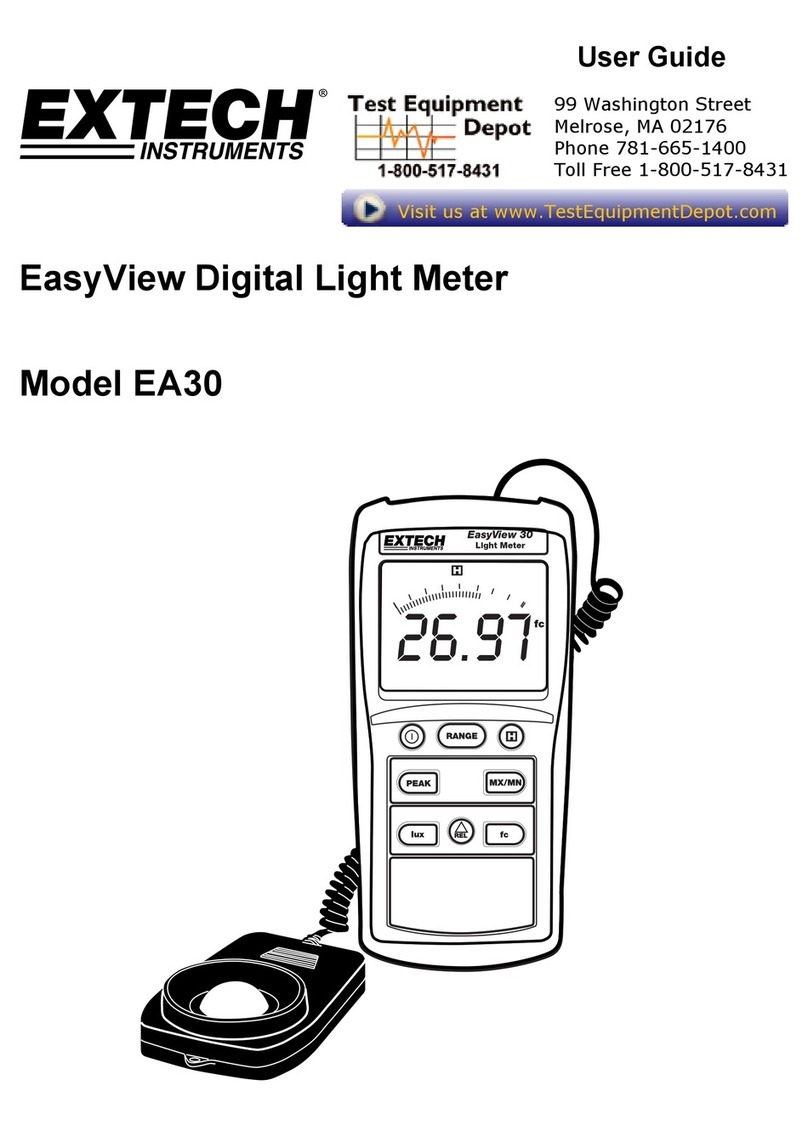
Extech Instruments
Extech Instruments EA30 user guide
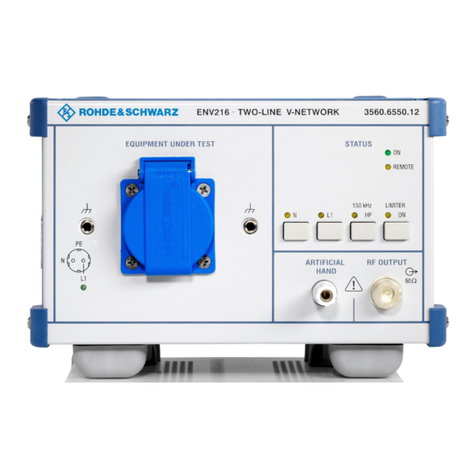
Rohde & Schwarz
Rohde & Schwarz ENV216 operating manual
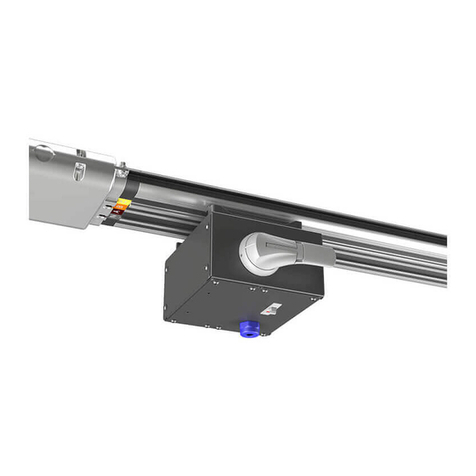
Vertiv
Vertiv Liebert MBX Busway Installer/user guide
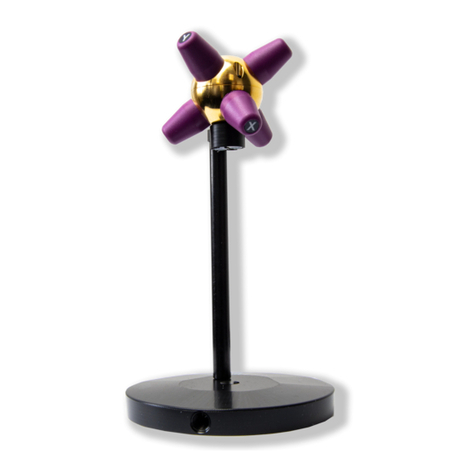
raditeq
raditeq RadiSense RSS2010E quick start guide
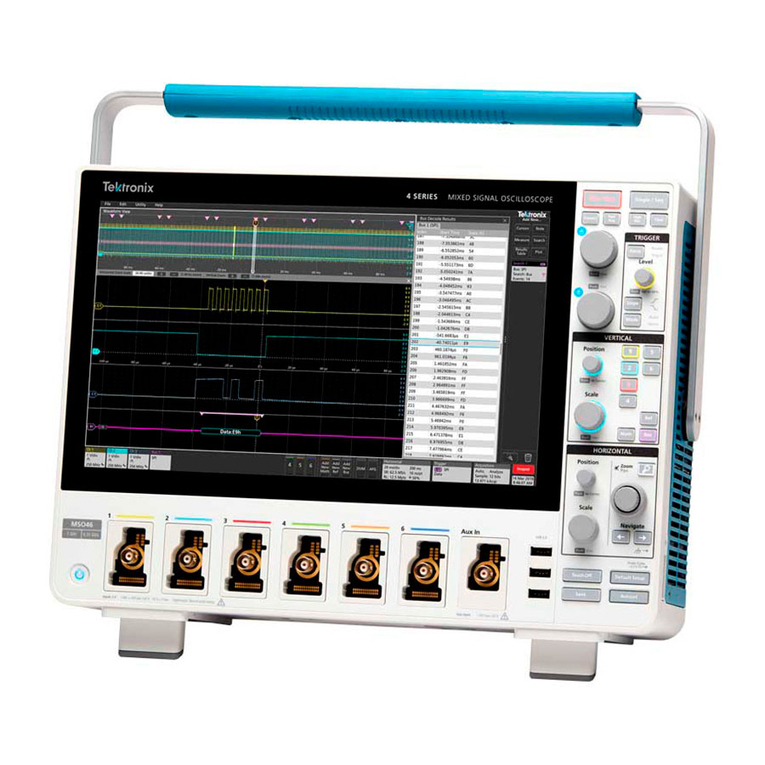
Tektronix
Tektronix MSO 4 Series Quick start manual
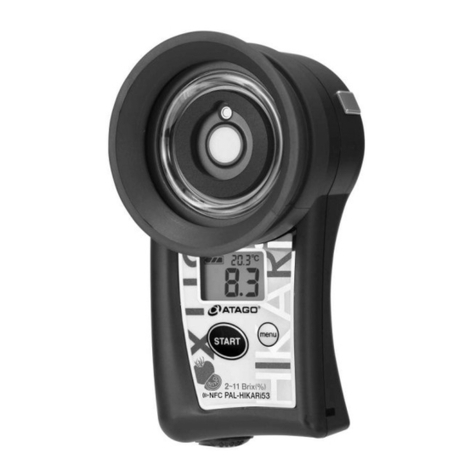
Atag
Atag PAL-HIKARi 53 instruction manual
